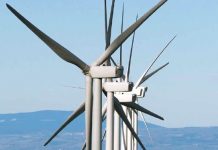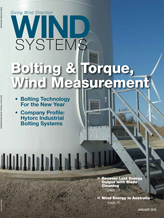According to the American Wind Energy Association (AWEA), the total wind capacity in the United States reached 69,343 MW as of September 2015, and U.S. wind farms currently provide enough clean energy to power 18 million American homes and have attracted more than $100 billion in private investments since 2008. The wind energy industry also employs more than 73,000 people in the U.S. with a manufacturing supply chain of 500-plus factories across 43 states.
In addition to wind energy generation being an economically sound option, it’s also beneficial for the environment. According to a recent report by the Environment America Research & Policy Center and the Frontier Group, fossil fuel-fired power plants emit 31 percent of U.S. greenhouse gas emissions, making them the largest source of carbon dioxide pollution nationwide. Wind turbines, on the other hand, do not release any carbon dioxide into our atmosphere. In fact, 98-percent fewer greenhouse gases are emitted per unit of the electricity produced throughout the life cycle of a wind turbine over what would be released over the life cycle of a natural gas power plant.
All good things, and they’re expected to continue in 2016. With the massive opportunity for wind energy development on- and offshore, wind power can be a key player in meeting the emissions reduction targets of the Clean Power Plan and moving us toward a future of 100-percent renewable energy. Congress recently passed an omnibus spending bill that included a provision to extend the expired production tax credit (PTC) for another five years. While the value of the tax credits will decline by 20 percent each year beginning in 2017, the new predictability of the federal policy should catalyze innovation, cost reductions, and growth, providing the wind energy industry with a break from the boom-bust cycles it has endured in recent years.
This month, we explored the bolting and torquing side of the wind industry, as well as advancements being made in wind assessments and measurements. Our inFocus section features a company profile on Hytorc Industrial Bolting Systems and a conversation piece with Nick Rasper from ITH Bolting Technology. You’ll also find a column written by Hank Surface from Tork Worx on electronic torquing and how it can provide the speed, accuracy, and repeatability necessary to get the job done, as well as two columns in the maintenance section from some familiar faces — Jack Wallace of Frontier Pro Services, who discusses how bug build-up on blades affects wind energy generation, and Jeff Walkup of Grahm & Juhl North America, who addresses condition monitoring and the challenges its various applications can present to those involved in this industry.
As always, thanks for reading!

































